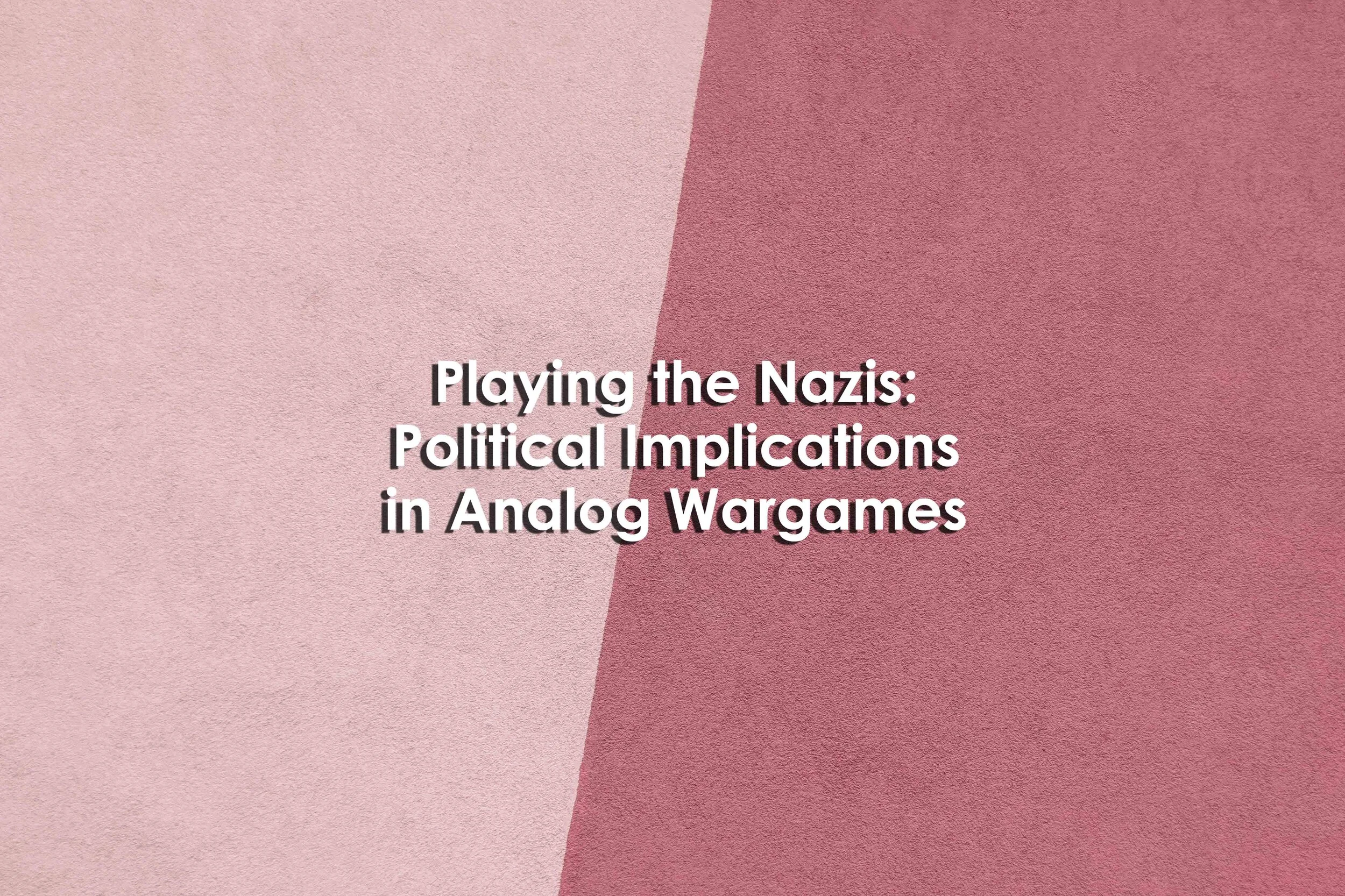Playing the Nazis: Political Implications in Analog Wargames
Playing the Nazis: Political Implications in Analog Wargames
Playing the Nazis: Political Implications in Analog Wargames
By Giaimie Alonge
September 16, 2019
Summary
European game designers produced some successful war-related games, such as Albert Lamorisse's La Conquête du monde, known in the English speaking-world as Risk, but this game conveys quite an abstract representation of warfare, while the great novelty offered by American wargames was precisely their so-called "Realism".
The very first hobbyist board wargames designed by Charles S. Roberts in the late 1950s, greatly stressed this aspect, as you can tell from the box covers of games such as Tactics II and Gettysburg.
10 While many young Americans were marching against LBJ's war in Vietnam, the wargamers - a tiny group of predominantly young white middle-class males - were spending a lot of their time playing games that presented war as an interesting, if not openly fascinating, subject.
On the box cover of John Hill's Squad Leader, a tactical game set in World War Two, and one of the most successful wargames ever released, there is a Waffen-SS soldier, with Totenkopf insignia clearly visible on his collar.
Several of these ads clearly state a preference for playing the Germans - or even the Japanese - in games on World War Two.
Besides games specifically devoted to the last phase of the conflict, in World War Two games the German player is usually the one on the offensive, at least in the first part of the game, and one could argue that wargamers normally prefer to attack.
In some ads, authors say that they prefer playing the Germans in games where the Axis has the initiative, but want to play the Allies in Anzio, a game about the Italian campaign, where the Germans are on the defensive from the very beginning.
As shown by Adam Chapman and Jonas Linderoth in their "Exploring the Limits of Play: A Case Study of Representations of Nazism in Games", contemporary analog and video games dealing with Nazism tend not to show the traditional Nazi symbols, especially the swastika which, in the 1970s was commonly reproduced in wargames.
Why should one blur swastikas in games, both analog and digital, and not in films or TV series? Again, Chapman and Linderoth are quite convincing.
As game designers Brian Train and Volko Ruhnke underline in their article "Chess, Go, and Vietnam: Gaming Modern Insurgency,"34 contrary to what they did in reality, these units operate on the front lines, fighting the Red Army.35 Despite their aspiration to achieve a realistic simulation of warfare, wargames tended - and largely still tend - to offer a very tidy representation of war, more or less like Hollywood movies from the 1950s.
Reference
Alonge, G. (2019, September 16). Playing the Nazis: Political Implications in Analog Wargames. Retrieved August 15, 2020, from http://analoggamestudies.org/2019/09/playing-the-nazis-political-implications-in-analog-wargames/


